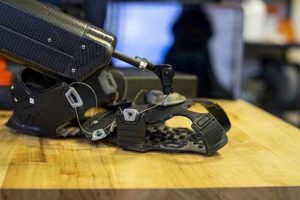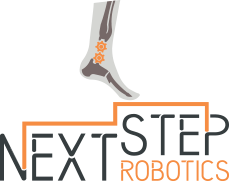NextStep Robotics has developed a groundbreaking device that combines robotic therapy and physical therapy. Our product allows for increased mobility for patients who suffer from a number of conditions. So, what exactly is our product, and how can it be used to benefit patients?
Our Product
 NextStep Robotics’s device is designed to strengthen foot muscles by analyzing the toe angle for each step and then making corrective adjustments for subsequent steps. As the patient’s foot muscles gradually improve, the device assists less. Our product has numerous practical applications, including in the fields of:
NextStep Robotics’s device is designed to strengthen foot muscles by analyzing the toe angle for each step and then making corrective adjustments for subsequent steps. As the patient’s foot muscles gradually improve, the device assists less. Our product has numerous practical applications, including in the fields of:
- Physical therapy
- Neurological therapy
- Orthopedic therapy
Advances in the field of physical therapy are few and far between. Methods that have been used for over a century are still in use today, with very little variation.
That’s why our product is such a game-changer. The use of our robotic therapy product in physical therapy can make an enormous difference in the positive effects for the patient. Using NextStep’s device can more quickly strengthen muscles in the foot, which results in less physical therapy sessions. Also, physical therapists who have been using NextStep’s technology have found it easy to use.
So, who is using NextStep? Physical therapists who want to use the best therapeutic tools available to accelerate their patients’ progress.
Neurological Therapy
Who is using NextStep? Our product can help those who are using neurological therapy.
Neurological disorders, which are diseases of the brain, spine, and the nerves that connect them, affect millions of people each year.
Common neurological disorders include:
- Headaches – This is the most common neurological disorder. Causes for headaches vary but can be caused by high blood pressure, infections, stress, lack of sleep, or too much caffeine.
- Stroke – Almost eight hundred thousand people in the U.S. suffer a stroke each year. A stroke occurs when there is damage to the brain from an impairment to the arteries in the brain.
- Seizures – Seizures are changes in the brain’s electrical activity and affect about one in one hundred people.
- Parkinson’s disease – Parkinson’s disease is a progressive nervous system disorder that affects your movement. Generally, it begins affecting people around sixty years old, and symptoms gradually get worse over time.
- Dementia – Dementia is a diagnosis that describes a group of diseases, including Alzheimer’s, that may cause the brain to fail. Dementia, which becomes increasingly more likely as people age, leads to continuous loss of brain tissue. This can affect behavior, emotions, memory, perceptions, and movement.
Patients enrolled in neurological therapy can utilize the NextStep device to improve limited mobility that can result from neurological disorders. Our product is a revolutionary breakthrough in robotic therapy that can be beneficial to patients enrolled in neurological therapy.
Orthopedic Therapy
Orthopedic therapy is another arena for patients to use NextStep’s device. Orthopedic physical therapy concentrates on enhancing the use of the orthopedic system, which are the joints, muscles, tendons, bones, and ligaments.
People who are enrolled in orthopedic therapy typically have problems with:
- Swelling
- Immobility
- Stiffness
- Pain
- Weakness
So, who is using NextStep’s device? Orthopedic therapy patients can enhance their range of motion by using NextStep’s physical therapy device.
Learn How You Can Be Someone Who Uses NextStep
Who uses NextStep? Patients with a wide variety of conditions want to regain mobility and independence through the use of the latest technology. If you are interested in becoming another foot drop patient who has improved range of motion thanks to NextStep, simply complete our convenient online form for more information.

